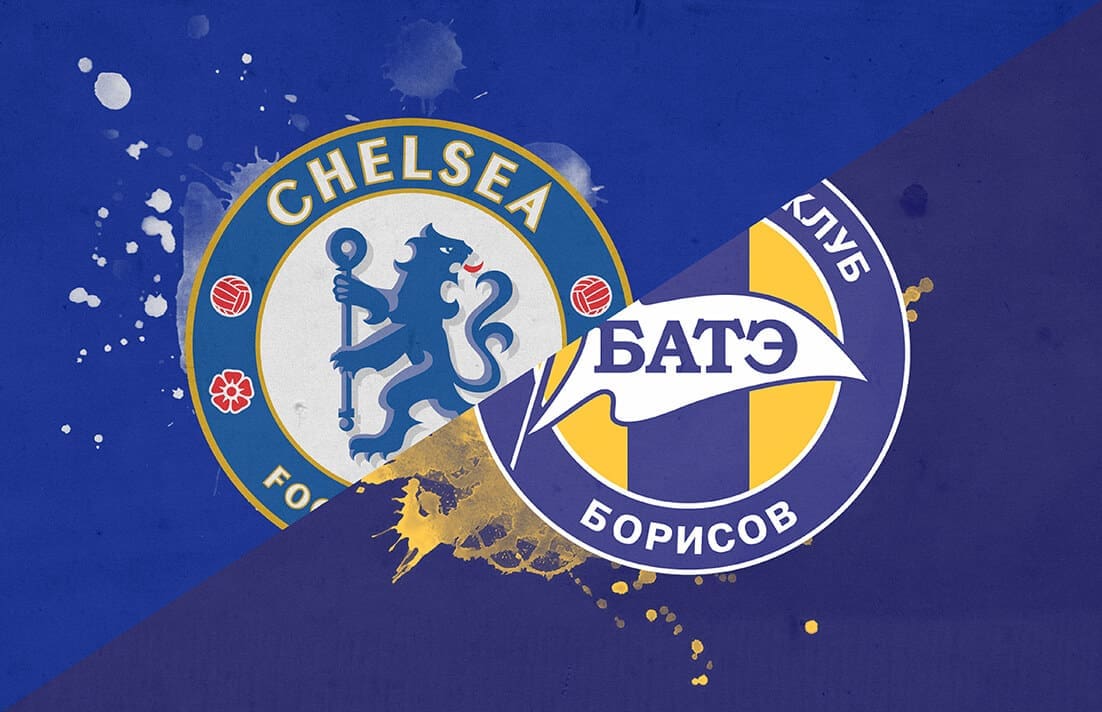This match analysis first featured on our dedicated Chelsea site, feelchelsea.com.
A victory for Chelsea in their Europa League match away to BATE Borisov guaranteed qualification into the knockout stages. Sarri named a particularly strong looking side with Jorginho and Hazard making rare starts in this competition. Hazard who made his comeback from injury in the last Premier League game against Crystal Palace struggled to make an impact during this game.
The first half was a very poor tepid display from Chelsea in which they struggled to create any real chances at goal, failing to have a single shot on target in the first half. Sarri will hope his side improve on this performance when it comes to the knockout stages. Credit must be given to BATE who were disciplined in their defensive work, preventing Chelsea from accessing key central areas.
BATE’s Low Block
BATE started the match by trying to be more aggressive in their positioning than the first match. They tried to engage the Chelsea defence high up the pitch in order to disrupt their build-up play. At Stamford Bridge it was Skavysh playing on the right-hand side of midfield who was the more advanced; however, in this game, it was the left midfielder Stasevich who was positioned higher up the pitch.

This tactic, however, didn’t last very long as BATE retreated further back and allowed Chelsea easy possession with their centre-backs and instead focused on preventing passes into Barkley, Loftus-Cheek, Pedro, Hazard and Giroud. This tactic was particularly effective in the defensive phase in the first half as Chelsea struggled to penetrate through central areas. Giroud, in particular, struggled in the first half receiving just 13 passes.
BATE created a box shape out of possession in midfield in order to prevent passes from being played into Barkley and Loftus-Cheek. Jorginho would often find himself within the centre of the box, ready to be pressed, during the build-up play. This often caused the Chelsea midfielders to position themselves deeper in order to receive the ball. The compact horizontal spacing forced Chelsea to pass the ball into less advantageous wide areas. When Chelsea did move the ball wide they struggled to find passes back into more advantageous central areas.



Chelsea’s Asymmetrical Shape
Chelsea had a very asymmetrical shape when attacking in the first half with Emerson providing more width in advanced positions in comparison to Zappacosta who stayed deeper and formed more of a back three in possession. This wasn’t necessary due to how deep BATE were playing in the game and Chelsea would have been better served pushing Zappacosta into a deeper wider position to help them stretch the defensive block. This, in turn, would have created more space in central areas due to the increased shifting that BATE would have needed to make.



A way that Chelsea could have broken the first line of BATE pressure would have been to make better use of their centre-backs in possession. Both Christensen and Cahill were content playing passes into midfield instead of dribbling forwards in order to provoke an opponent into moving out of their defensive shape. This would have helped to create a free player in a position closer to the BATE goal. Instead, they both preferred to play passes into Jorginho who was surrounded by BATE midfielders.
Second Half Adjustments
Chelsea started to threaten BATE with passes back inside into the halfspaces, as Barkley and Loftus-Cheek started to position themselves higher up the pitch. Hazard and Pedro started to pin the BATE defenders which prevented them from stepping out of the defensive line to pressure the Chelsea midfielders.

Chelsea started to make better use of the wide areas in the second half with Zappacosta positioned wider and higher, which in turn created more space centrally. If Zappacosta was used in the build-up then Pedro would be in a wider area so as to stretch the defensive line. As they circulated the ball into wider areas Chelsea began to create better access to the dangerous central areas, due to the increased distance that the BATE low block had to shift.
Because of the more advanced positions that the Chelsea midfield took up, when the ball was circulated into wide areas, there was better support to progress forwards on the pitch. With Barkley and Loftus-Cheek positioned more effectively in the half spaces, Chelsea were able to play quicker combinations around the edge of the area.


The Chelsea goal came from a transition moment in the game. BATE cleared the ball out from a previously attempted through ball. Five Chelsea players surrounded the immediate area around the ball which prevented BATE from counter-attacking. Possession was regained by Barkley who played a first time pass into Jorginho, who in turn played a first-time pass into Emerson, who crossed for Giroud to score the only goal of the game.
Conclusion
This was a rather lacklustre display from Chelsea in which they struggled to break down the deep defensive block of BATE. Whilst they enjoyed 74% possession they failed to create many high-quality chances, registering an xG of just 1.2. The tactical adjustments Sarri made at halftime, allowed Chelsea to better access central areas and create a higher quality of chance.






Comments